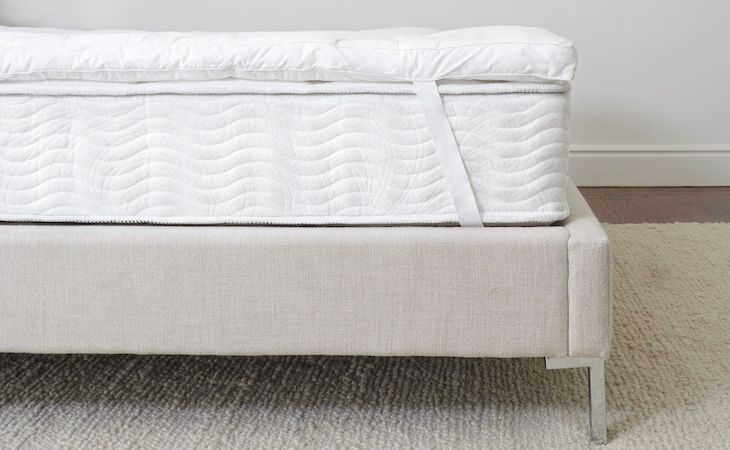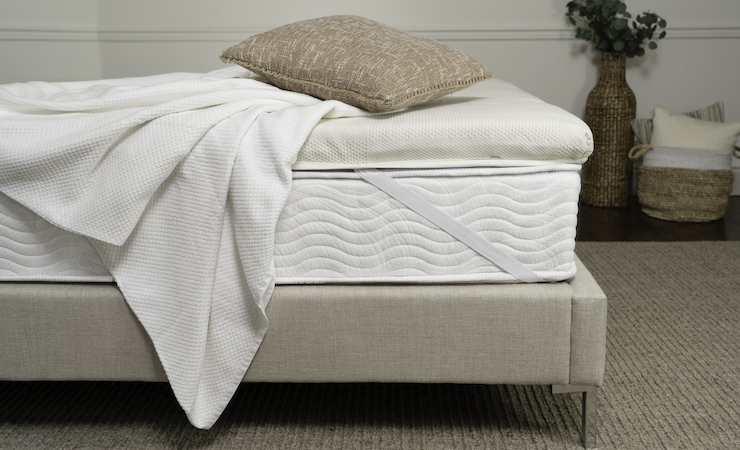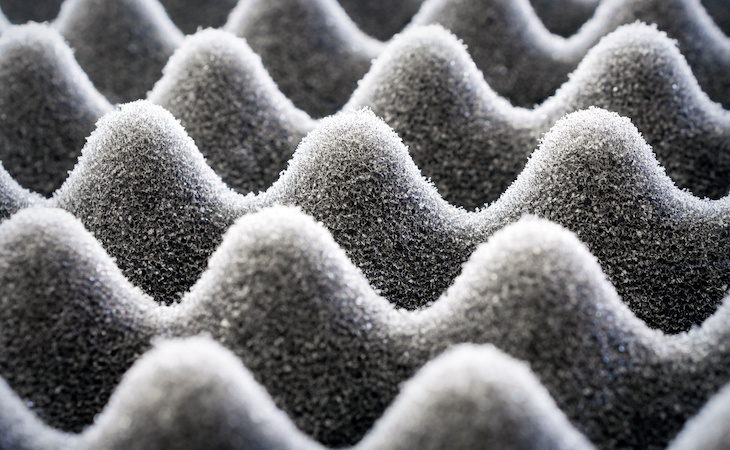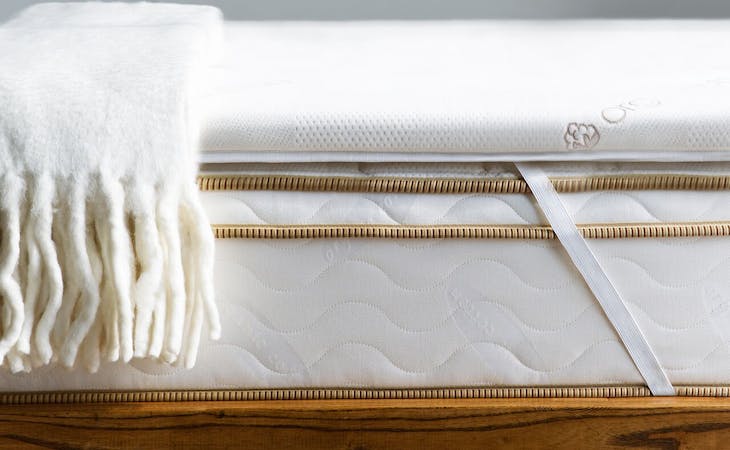You might have encountered the term “featherbed” lately and probably have a lot of questions. What is a featherbed, exactly, and why would you want one?
Featherbeds (also known as featherbed toppers) actually have a long history but have risen in popularity in the last few years.
There’s a good reason for that: They can significantly enhance your sleep quality. Read on to learn more about featherbeds and how to choose the right one for you.
What is a featherbed topper?
A featherbed is a type of mattress topper filled with feathers, down, or down alternative. It’s placed on top of your mattress and is used to provide an extra layer of comfort and help you relax and sleep better at night.
Featherbeds existed in Europe at least since the 14th century and were also called “feather ticks.” A “tick” is simply the linen or cotton enclosure that housed the feathers or down and was made of closely woven fabric that prevented the feathers from leaking out.
Initially, featherbeds were only for the rich and were highly valuable possessions that people passed on from generation to generation. Similarly to modern featherbeds, they were placed on top of existing harder mattresses.
Those particularly lucky slept with a featherbed underneath and another one on top of them (the latter one eventually became known as a duvet.)
The earliest featherbeds were just bags filled with feathers or down and needed frequent shaking and re-shaping to help distribute the filling. Today’s featherbeds are more elaborately constructed to help distribute the filling.
The most common type of featherbed construction is a baffle box featherbed. It looks like a comforter and has quilted sections (or baffle boxes) to help distribute the filling evenly.
Another less common type of construction is called a “baffle channel.” That’s when the featherbed is quilted into vertical “channels” rather than squares.
Here, the filling moves around more easily—which means it’s harder to redistribute it evenly. But, it also allows for more support in specific areas if needed.
A featherbed is a type of mattress topper filled with feathers, down, or down alternative. It’s placed on top of your mattress and is used to provide an extra layer of comfort and help you relax and sleep better at night.
Types of feathers used in featherbed toppers
The filling used in featherbed toppers is a combination of feathers and down and can come from ducks, geese, or both. Some cheaper options may contain chicken feathers, which are typically more prickly and less soft than the other two.
Down refers to the soft inner feathers of a duck or goose, while feathers are the outer covering of a bird. Down is softer than feathers and doesn’t have quill, so the more down your featherbed has, the plusher your featherbed—and the less likely you’re to get poked at night.
Another type of filling is a synthetic down alternative. A high-quality synthetic down alternative featherbed topper is a great option for those who want that feeling of sleeping on a cloud but can’t use natural down because of allergies or other reasons.
How to choose a featherbed topper
When choosing a featherbed topper for you, consider the type and quality of materials it’s made with as well as your sleeping preferences.
The outer fabric of the featherbed should be both breathable and durable enough to not let feathers leak out. Long-staple cotton is both of these as the longer fibers of cotton make the material both more durable and more breathable than other types of fabric.
You should also consider which construction type best serves your needs. A baffle box featherbed does a better job distributing the filling evenly, while a baffle channel featherbed allows for more support in specific areas but requires regular fluffing.
Additionally, you have to choose the right type of filling for you. Since down is softer than feathers, the more down your featherbed has, the plusher it will be. The more feathers it has, the firmer it will be. The choice will depend on your personal preference as well as your sleeping position.
Side sleepers, for example, will sleep better on plusher featherbeds as they need more pressure point relief in the areas of hips and shoulders.
Stomach and back sleepers, on the other hand, will want something that will prevent them from sinking in too much—so a featherbed with a higher feather content might be a better option.
Finally, consider the quality of the materials used in a featherbed. Goose down is considered higher quality than duck down because geese have larger and fluffier down clusters, but duck down can also make excellent featherbeds.
A cheaper featherbed will have a very small percentage of down if at all as down is more expensive than feathers. Cheaper featherbeds might also be problematic for people with allergies, whereas higher quality featherbeds often contain sanitized feathers and are therefore free of allergens.
If you want to play it safe, a high-quality down alternative featherbed will give you all the qualities of natural down without the risk of allergic reaction.
Benefits of featherbed toppers
There are many benefits to using a featherbed topper. These include:
- If you’ve just purchased a new mattress, then a featherbed can make you more comfortable during the break-in period.
- If your mattress is too firm or your firmness needs have changed, then a featherbed might provide that much-needed extra layer of plushness.
- It can help prolong the lifespan of your mattress.
- Even if your current mattress works well, a featherbed topper can still help bring your sleeping experience to a new level.
- Finally, a featherbed topper can help keep you warm and cozy at night without making you sweat.
Drawbacks of featherbed toppers
There aren’t too many drawbacks to featherbeds. However, you should consider the following before buying one:
- If yours is a cheaply made one, then it might cause allergies. Or, the material will let feathers leak out and you’ll get poked at night.
- Some featherbeds might be tricky to take care of, so read the manufacturer’s instructions carefully before purchasing.
Featherbed topper costs
Featherbeds vary widely in price depending on the quality of the materials. You can find some lower-quality feather beds for under $100, while some luxury options cost over $1,000. Most featherbeds cost between $100 and $300.
How to care for a featherbed topper
Always follow the manufacturer’s instructions when it comes to cleaning your featherbed. Some can only be dry-cleaned, while others you can put in the washing machine.
FAQs
What’s the difference between a featherbed and a mattress topper?
A featherbed is essentially a type of mattress topper. Both are placed on top of your mattress. Mattress toppers can be made of a variety of materials including latex, polyfoam, and memory foam. Featherbeds are filled with feathers and down or synthetic down alternative.
What materials are usually used in the construction of a featherbed?
A featherbed can be filled with feathers and down from ducks or geese or with a synthetic down alternative. The material of the outer casing is usually cotton.
Do you sleep directly on a featherbed?
Yes. Your featherbed sits on top of your mattress and you sleep directly on it.
Find the best featherbed topper at Saatva
When you’re ready to upgrade your sleeping experience, check out Saatva’s high-quality
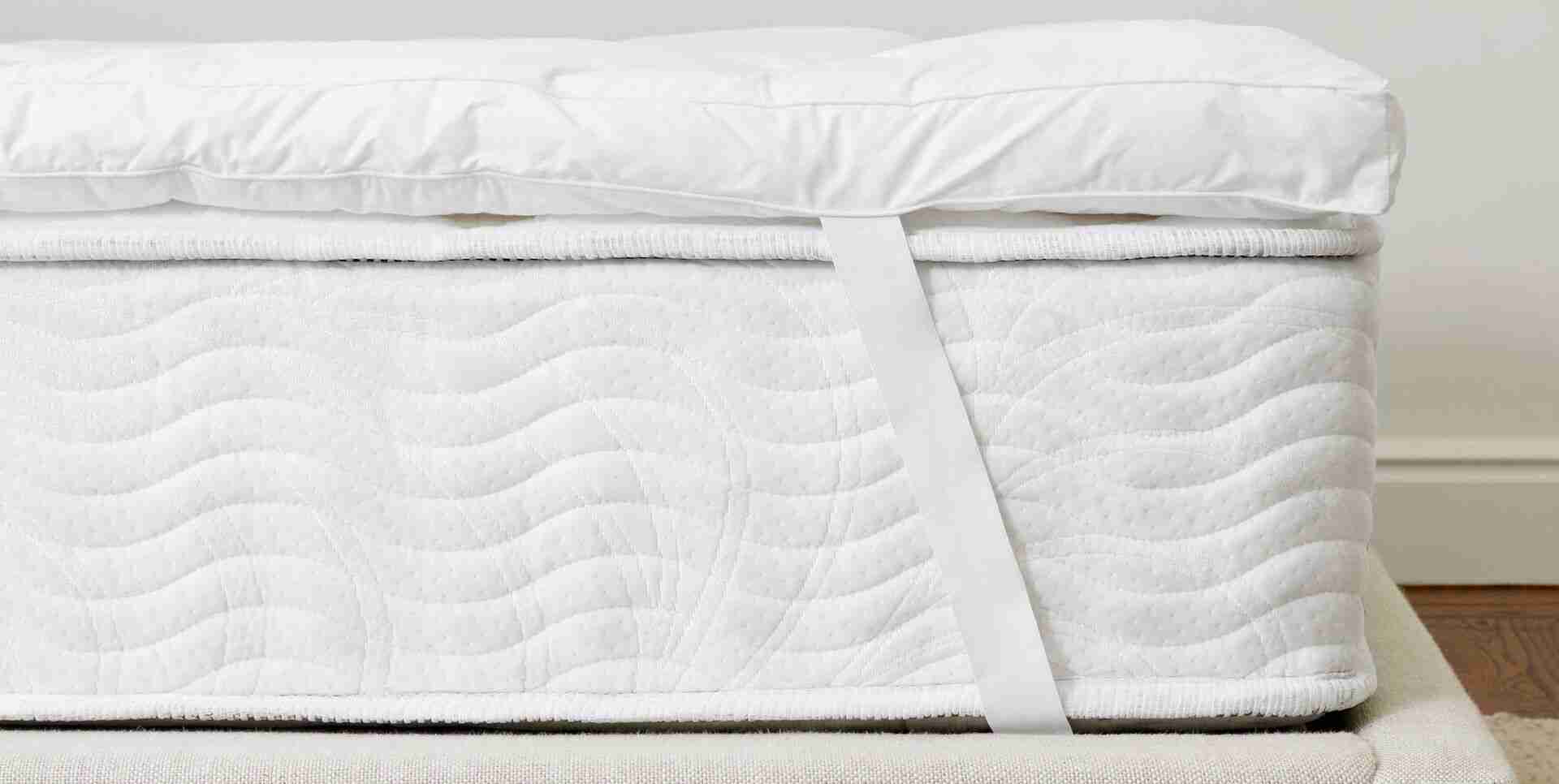
Ultra-plush, breathable comfort
It’s been thoughtfully designed with hypoallergenic down alternative fill to add luxurious plushness to your sleep surface without sacrificing support.
Plus, our featherbed topper is OEKO-TEX® Standard 100 certified, meaning it’s free of harmful chemicals and better both for you and the planet.

